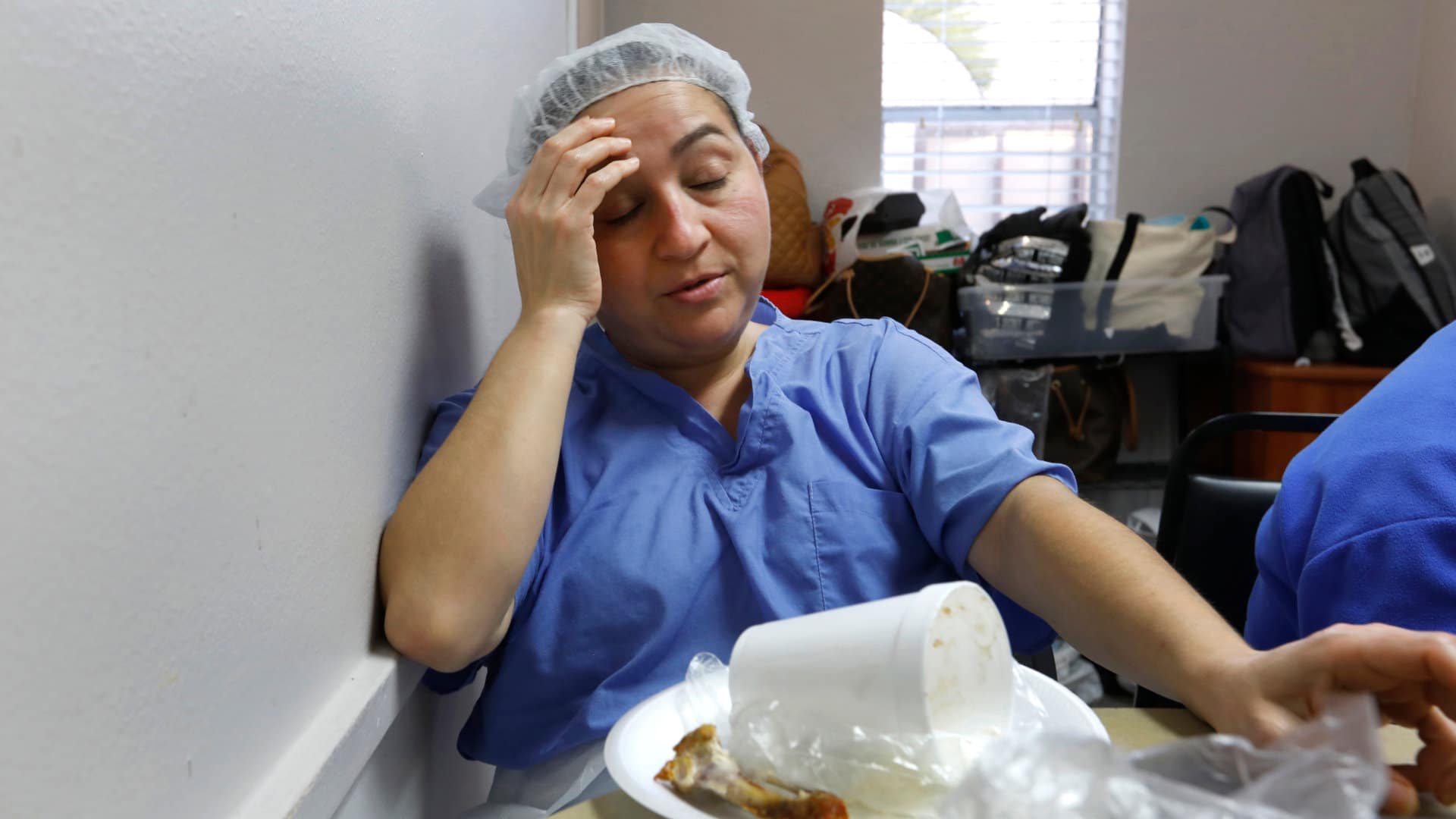
Even before the Covid-19 pandemic, the nursing profession was in dire straits. An aging U.S. population was raising the demand for nurses faster than professional schools could supply them, and increasingly, people working in the field were calling it quits, citing burnout and unsafe working conditions.
The pandemic has only accelerated the exodus, as many nurses have come to realize that certain aspects of the profession are unsustainable, unhealthy, and unsafe for patients and staff alike. Among those troublesome job attributes: the once-venerated 12-hour work shift.
For more than four decades, the 12-hour shift has been a mainstay of the nursing profession, with nurses typically working from 7 a.m. to 7 p.m. — or from 7 p.m. to 7 a.m. — for three or four days each week. As an intensive care unit nurse, I can understand why this model is attractive. For one thing, the relatively short work week can be a boon to nurses who have caregiving obligations outside of the hospital. But on those days when nurses must clock in, marathon work sessions leave little downtime for sleep and self-care. Increasingly, evidence is showing that long work hours pose serious risks both to the workers and to their patients.
Now seems like a good time to ask: Is the 12-hour shift still worth it?
Like most issues in health care, the question is politically and practically complex. These long nursing shifts began in the 1970s in the U.S. as a way of simplifying scheduling and addressing a national nursing shortage. They made it possible for just two nurses, alternating shifts, to care for a patient around the clock. And 12-hour shifts remain popular among many nurses: Studies have found that the vast majority of nurses who work those shifts are satisfied with their work schedule.
But there’s growing evidence that 12-hour shifts take a substantial toll on the people who work them. Nearly 10 years ago, a survey of more than 22,000 registered nurses by researchers at the University of Pennsylvania found that longer shifts can lead to burnout and job dissatisfaction — and can push some people to leave the profession altogether. A recent study examining nurses and health care assistants at a large mental health hospital in England found that increasing shift lengths from 8 to 12 hours per day resulted in increased staff absence due to sickness. Long shifts can also lead to health problems that reverberate across nurses’ lives, including fatigue, injury, cigarette smoking, increased alcohol use, sleep deprivation, and episodes of drowsy driving.
While at work, nurses often run nonstop through their shifts, skipping meals and even bathroom breaks. And shifts scheduled to last for 12 hours can easily extend to 13 hours or more, factoring in the time it takes to hand off patient care from one nurse to the next, documentation requirements, and the mandatory overtime now imposed by many institutions facing staff shortages.
The dangers of these taxing work schedules spill over to patients. A 2020 metanalysis published in the Journal of General Internal Medicine puts the number of deaths due to medical errors in the U.S. at around 22,000 per year. (Earlier estimates that suggest the number could be much higher have recently become the subject of debate.) Although only a fraction of these errors are attributable to nursing care, evidence suggests that nurses are more likely to make mistakes when they are nearing the end of a long work shift. One study led by researchers at the University of Pennsylvania found that hospital nurses were three times more likely to make an error when their shifts exceeded 12.5 hours.
One potential safety advantage of the 12-hour shift is that it minimizes the number of patient handoffs between nurses and thereby reduces the likelihood of miscommunication errors. But there are numerous ways to improve the safety of patient handoffs; it is far more difficult, if not impossible, to alter the human and biological factors that give rise to fatigue during long work shifts.
There’s a better way. Cutting shifts by as little as two hours would be sensible, possible, and important for nurse and patient safety. One option would be to have nurses work four days a week in 10-hour shifts, with only eight hours of each shift spent providing direct patient care. With the remaining two hours, nurses could conduct more thorough patient handoffs or devote more time to research projects, quality improvement initiatives, family support group facilitation, and other nonpatient care projects that can sometimes go unpaid. In this staffing model, it would take three nurses, not two, to deliver round-the-clock care. But the benefits would almost certainly outweigh the costs.
Change is hard, particularly in the vast and complex world of health care. But the 12-hour nursing shift, as it currently stands, has outlived its usefulness. For the wellbeing of staff and patients, it’s time the industry gave its nurses a break.
Maile Mercer, MSN, RN, CCRN, is a critical care nurse and holds a master’s degree in health leadership from the University of Pennsylvania. She is currently a Ph.D. student at New York University. Find her on Twitter @mailemercer.
"Hour" - Google News
November 25, 2021 at 05:34PM
https://ift.tt/3cLonx4
It's Time to Rethink the 12-hour Nursing Shift - Undark Magazine
"Hour" - Google News
https://ift.tt/2WcHWWo
https://ift.tt/2Stbv5k
Bagikan Berita Ini














0 Response to "It's Time to Rethink the 12-hour Nursing Shift - Undark Magazine"
Post a Comment